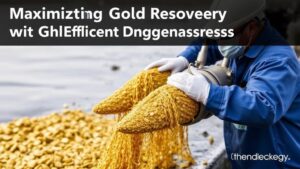The Story of Washington’s Rich Liberty Mining District and Its Goldfields
The Story of Washington’s Rich Liberty Mining District and Its Goldfields
The Liberty Mining District, located in Washington States Kitsap County, represents a pivotal chapter in the history of American gold mining. Established during the mid-19th century, this region thrived on the promise of prosperity offered by its abundant mineral resources. This article explores the development, significance, and legacy of this remarkable district.
Historical Context
The Liberty Mining District was officially established in 1890, but its mining activities began even earlier, driven by the wider Gold Rush phenomena sweeping across the United States. Following discoveries in California and later gold finds in areas like Alaska and Canada, prospectors turned their sights on the uncharted territories of the Pacific Northwest.
In 1889, significant gold deposits were discovered in the region, accelerating interest and migration. By the early 1890s, Liberty became a bustling hub of mining activity, with thousands of prospectors flocking to the area to stake their claims, hoping to strike it rich.
Geological Features and Gold Deposits
The geology of the Liberty Mining District is characterized by the presence of ultramafic rocks, specifically serpentinite and basalt, which provide a conducive environment for the formation of gold deposits. These geological features often host quartz veins that can contain gold, making the area especially attractive to miners.
According to the Washington Division of Geology and Earth Resources, gold production from the Liberty Mining District between 1890 and 1920 was estimated at around 130,000 ounces. This statistic highlights the districts economic impact during its prime.
Mining Techniques and Technology
Mining techniques in the Liberty District evolved significantly from the early years to the peak production period. Initially, miners relied on placer mining methods, which involved washing away sediment to extract gold particles. As the demand for gold surged, more sophisticated techniques, such as hard rock mining, were adopted.
- Placer Mining: Miners extracted gold from river sediments using pans, sluices, and rocker boxes.
- Hard Rock Mining: Involved digging tunnels to reach high-grade ore and required advanced technologies such as drilling and blasting.
Technological advancements, such as the introduction of steam-powered equipment in the early 20th century, significantly increased productivity and efficiency in operations. For example, the use of drilling machines and pumps not only enhanced ore extraction but also improved safety for miners working underground.
Economic Impact and Community Development
The gold rush in the Liberty Mining District stimulated economic growth in the region, leading to the establishment of a mining community. Numerous towns, including Liberty itself, emerged to support the miners and their families. Businesses such as general stores, saloons, and boarding houses flourished, further illustrating the economic ripple effect of mining activities.
Also, the prosperity brought about by mining led to infrastructure improvements, including roads and telegraph lines, which facilitated communication and transportation. This development laid the groundwork for future economic endeavors beyond mining.
Environmental Considerations
The impact of mining on the environment has been a subject of intense scrutiny. In the case of the Liberty Mining District, the extraction processes contributed to land degradation and pollution of nearby waterways. The removal of large volumes of earth altered landscapes and affected local ecosystems.
Modern mining practices have adopted regulations to mitigate environmental damage. For example, contemporary mining operations are often subject to strict environmental assessments and sustainable practices aimed at preserving the surrounding landscape and biodiversity.
Legacy and Current Status
Today, the Liberty Mining District is a mixture of historical significance and modern tourism. While active mining operations are limited, remnants of old mines and ghost towns attract visitors interested in history and outdoor activities. Educational tours and historical sites provide insight into the mining legacy of the region.
In recent years, there has also been a resurgence of interest in mining due to rising gold prices and advancements in extraction technologies. But, contemporary mining endeavors are more focused on sustainability and minimizing environmental impacts.
Conclusion
The Liberty Mining District serves as a testament to the historical allure of gold and its profound impact on community development, economic growth, and environmental considerations. While the Gold Rush era may have faded, the stories ingrained in Washingtons mining history continue to captivate and educate future generations.
As we reflect on the past, it is essential to draw actionable insights regarding sustainable practices and community engagement in resource management. Understanding this history allows for more informed decisions about the future of mining and its role in society.

